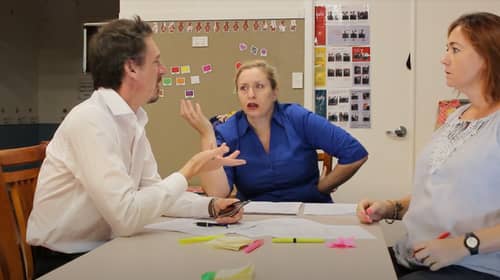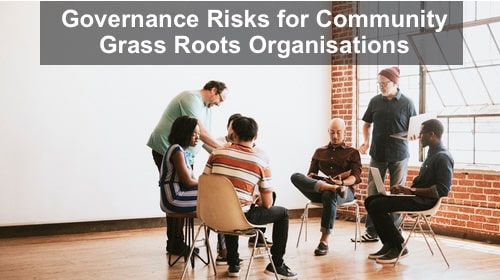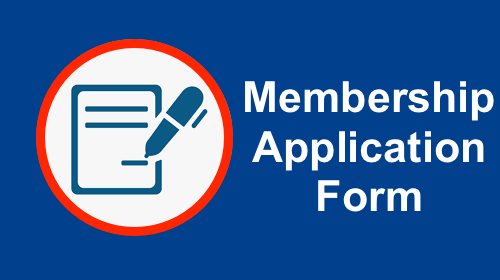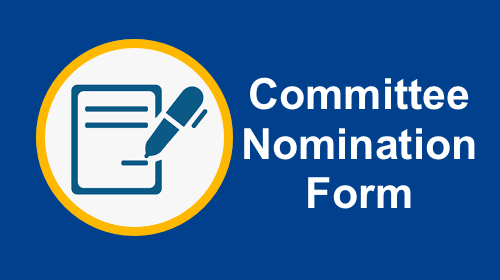How to Take Meeting Minutes
Have you ever been asked to take minutes at a meeting and panicked because you didn’t know what to do?
The take a deep dive into the world of minute taking.
Authored by: iClick2Learn Team
Translate Text
Let’s get started. Fabulous to have you all here. We’re talking about how to take meeting minutes. There is so much to talk about in this topic. And meeting minutes, you know, can get quite detailed. So and, you know, again, if you’ve got any questions, feel free to pop those in chat. We are recording this session of course, so if you have to duck off early, don’t worry, you will be able to access this in the library next week. And for those of you who, you know, as I said, if you’ve got any questions or if there’s anything specific, you know, even something that you’ve done this session, and then you go to another meeting and you think, oh, actually this didn’t come up, I’d really like to ask a question. You’ve all got my email address. So feel free to email and to connect and ask questions. So again, the recording we’ll make sure that it’s available in the library.
Before we get started, I would like to acknowledge our traditional owners and for us here, normally our headquarters is in Dhubu-gu which is in the Wiradjuri land. but I’m actually in Yukambul Land, which is up near Tenterfield. So beautiful part of the country to be in at the moment.
When we think about meeting minutes, couple of critical things that come to mind is that meeting minutes are essentially one person’s perception of what happened at a meeting. Did anyone ever feel that way? You’ve got your office bearers, your general committee and you’ve looked at meeting minutes and you thinking, doesn’t quite match what I thought. So meeting minutes are taken by one person. There are some structures that are certainly going to help you with accurate recording of meeting minutes, but at the end of the day, it is one person taking the minutes. And that’s why it’s so important to have these structures and processes to help support us take meeting minutes that are both legal, so that meet our legal compliance, but they’re also effective in that they support the recording and the tracking of information and how we’ve made informed decisions, and particularly, you know, if there’s financial decisions, you’ve got that information to support those financial decisions when you’re being audited for those organisations joining us that are actually audited. So that’s certainly one thing that a lot of your auditors will actually ask for is to make sure that they’ve got copies of meeting minutes around those financial decisions. So whose job is it? Yes, the secretaries or in many cases, it might be the delegate. And when I talk about secretary, I’m also talking about company secretary as well, for those of you that are under the corporations or the Corporations of Aboriginal Torres Strait Islanders Act as well, you would use the term company secretary. So it is the secretary’s, what we call statutory responsibility. And what statutory responsibility means is that if you have a look at the constitution, you’ll actually find under the secretary’s role that the accurate recording and retention of minutes comes under the secretary’s role. But we do have some organisations where we might have a paid person, be it, you’ve got a contractor that’s coming in and they’re taking the minutes, or it may very well be that in some cases it might be the manager or the CEO or the coordinator of your service or community organisation is actually the one that is delegated to type those minutes.
Ultimately, whoever does record the minutes, needs to liaise with the secretary and they need to report to the secretary, and the secretary reports to the committee and board. And again, that’s because who is legally responsible? The secretary, it is their delegated responsibility, as I’ve said that term statutory. So it’s their responsibility. This is, well, I know we’re talking about meeting minutes, you know, anything that’s delegated, if it’s a statutory responsibility of someone. So it could be the treasurer, for example, you know, the bookkeepers should also be reporting to that person. So it’s no different when we talk about meeting minutes. What happens though, is that there is this tension between, am I taking minutes or am I involved in a discussion? You know, does anyone ever feel that. Well, I, you know, I’m see a couple of nots, yes, yes. If our job, you know, and I’ll look at this from two lenses where the secretary, you know, let’s say of a not-for-profit and our job is to take minutes and we sort of, you know, I’ve got half an ear open to the conversation that’s happening as well as the, oh, I’ve got to make sure I note that for the record. When you’ve got a delegated person, particularly that delegated person is your internal person, and I have the same tension. You know, I’d really like to get involved in this conversation, but I’m here taking minutes. Now, that delegated person, particularly when it’s your CEO or your manager, of course, you know, they really should be involved in some of those conversations. If it’s a delegated sort of administrative person that’s not involved in those conversation, that removes the tension. But you’re always going to be dealing with this tension when you’re both a governor, as in, you know, you need to sort of interact and have these conversations as well as taking the minutes.
There is an easy way to sort of make that role of secretary a lot, you know, basically just remove that tension and make it a lot easier for everybody. And that is when the president or your chair, depending on the terminology that you use, they are actually the lead facilitator and they’re facilitating discussion. So that discussion involves secretary. So let’s just say at a meeting, it’s okay, this is the agenda point, the secretary is not recording anything down, the chair and the president is facilitating the discussion about that agenda point, including the secretary in the conversation, and they’re actually making some of their own notes, so just some notes on the side. What they do is they bring everybody together as a facilitator would do, and they will say, okay, so based on the conversations and based on what I’m hearing, this is the discussion, these are the key points in the discussion, you know, the pros and cons, and then this is the decision, is that right? Is there anything to add to that? And so then we have a conversation about the summary. But the key thing is that the secretary is involved in the discussion. And it’s when the president or meeting chair or the chair of your organisations says, all right, so to summarise that, that’s the trigger for the secretary. Oh, okay, I’m going to take notes. Yep, okay, here we go, this is the summary. So they’re actively involved in the discussion, but at the summary point, that’s when start taking minutes. And what do they minute? They minute the summary that’s being presented to the chair and being presented to the room. So not only does that remove that tension of your secretary and minute taker being engaged in the conversation, it also means that everybody’s hearing what’s being minuted. There’s no minutes being taken by the individual that hasn’t been reflected by the group or agreed by the group. So that’s one way, that, a really positive way that the chair or the president can make sure that you are accurately recording the minutes, that it isn’t more than just, you know, one person’s perception, the secretary’s perception of meetings. And of course, as a secretary, don’t be afraid to ask as you’re minuting that. Definitely asked for clarification. Does anyone have any questions on that, any thoughts on what they think about that as a process. Who’d like to share? Feel free to unmute yourself. Benita.
– [Benita] Yes, I was just going, one of the things that is always difficult is whether to under minute or whether, how much minutes to put in, so even for a summary. So I was wondering if all the people ever record minutes with a Google recorder with the permission of the entire group, of course, because legislation requires that because we tend to only minute a question of the report. We just said in January, there was a discussion about X, and the group agreed to blah, blah, blah, and then all the detail is in the recording that we then save afterwards, so that the minutes really quite succinct and short. Is that appropriate or do you think that’s a little bit under done?
– So the minutes can be, and I’ll give you an example of different ways that you would run minutes. In terms of the legal responsibilities around minute taking, is we really need to demonstrate an informed decision-making process. And so that’s when you would record the pros and cons. So when I look at official records, the official record is the written minutes. The other documents, the information that’s brought to support a decision, you know, yes, that might form part of why you made a decision, but the minutes themselves is the actual official record. And the official records don’t recognise your, you know, voice recording or even these Zoom, you know, a Zoom meeting, for example, they’re not recognised. And it’s an interesting one because from a legal standpoint, and this may be something you may wish to check with your legal eagles, from a legal standpoint, the lawyers and I’ve liaise with and discussed minute taking, and, you know, the rules and regulations, just been a lot of different cases around minutes, even when directors are taking their own minutes, et cetera, is that once you’ve finished with a recording, it should be destroyed. And it sometimes is that too much information and too little information, it’s also, you know, there are some things that are said at meetings that potentially shouldn’t be disclosed otherwise. And if you’ve got any record that can be subpoenaed, so should something happen, then I can request access to all information, including voice recordings. And so, you know, it is a risk conversation to have definitely. But yeah, great one. And you know, certainly definitely around the legislation, and then that’s one, you know, you certainly, with Zoom, it now asks you, you know, and lets you know that the session is being recorded, so another example. But you know, having recorded meetings and verbally recording, you know, what’s happening or video recording can also be a really great management tactic as well, if you notice that there are some tensions, if you notice that, you know, I’ve had one example where there was, you know, a few, a few swear words thrown around, you know, a little bit of high tension, it was like, okay, well, how do we manage this? How do we get people to understand that they need to think about respectful behaviours? And so that can also be one as well. And yeah, definitely that said, it’s pretty simple now to take a recording via voice recording and get an automatic transcript of the dialogue. You can then edit or cherry pick the dialogue to compile a minutes along with your notes, I think that saves. So yeah, definitely, transcripts are always a great one for, you know, building minutes out of transcripts can be a great one. But I think it comes down to as well, the type of minutes that you are doing. So if we were doing a recorded conversation, yeah, that is definitely a great one. So delete the original to protect the innocent low end. That’s where I’m at. Sasha, you had a question, what legislation? Can you just give me a bit of a reminder around what I talked about in terms of legislation, that will…
– [Sasha] I just was wondering if there’s like a specific act about how minutes should be taken or whether it’s a bit in your constitution of each place? Wasn’t quite sure about that.
– Love that question, and you must have had an early copy of the slides. Yay. So there’s a few, in terms of legalities, there are a few acts and regulations that help guide us as to how we take minutes. Now, I always when think about this space, community development, when we think about what we’re doing, we always look at okay, what’s caseload say, what’s the precedence has been set in the court of law as well as what our act say as well? And so this is why I’m referencing the Corporations Act in terms of, you know, best practise governance, everything that’s going to be tested is always tested there first. So for those of you who maybe if you’re in an interest group and think, oh gosh, Corporations Act, this is a big thing that kind of isn’t relevant ’cause I’m in an interest group. It easing in the perspective that that really does set the benchmark. And so there are a number of other considerations as well. And I’ll talk about some of those a little later, because some of those could be for example, you know, things such as the Privacy Act, there might be some other legislations surrounding if you have a service with children, and that forms part of a particular meeting, then there are requirements around how long you must retain those meetings. So you know, that could be for an internal staff meeting for example. But when we talk about sort of the legalities are generally, Corporations Act sets a legal framework, and you can see the reference there to section, Section 251A. So in essence it’s about the minutes must be a full and accurate record of all the business done, they should include proceedings and resolutions, who was present and all of the resolutions that were passed. And further to that, the other statement is that a minute that’s recorded and signed is evidence of the proceeding, resolution or the declaration to which it relates to unless the contrary is provided. And so basically I’ll give you an example of this, some Gosford Christian School is an example of minute taking where the, and this is certainly in case or where minutes were presented and provided as accurate minutes, but somebody else had contrary information and another person had contrary information to the minutes. So you know, it was deigned those minutes weren’t actually official record, that the two directors who had copies and records of what actually transpired at the meeting were deemed to be accurate. So that’s what we mean by contrary information. So your, but as I said, you might have other factors that come into play. So you will also have aspects in your bylaws, in your constitution, there may also be some aspects, as I’ve mentioned relating to, you know, if you’ve got internal meetings relating to individuals as well. So you do need to make sure that you consider those and are across those. But at minimum, your minutes need to record the following things. The quorum and that the quorum was present. And just to, I’ll just going to to take a minute on this issue of quorum. Really, really great idea to go and have a look at your constitution and have a look at the quorum in your constitution. There are a couple of words in this quorum piece that can actually change for you. And they are, if a quorum needs to be present at the start of the meeting, or if a quorum needs to be presented during the meeting, another term may be at all times. So that’s an interesting one. So if your quorum has to be present at the start of the meeting, providing you start the meeting with quorum, you could have people leave and you could continue the meeting constitutionally, that’s what it states. Not best practise, I don’t certainly advocate for that at all, you should have a quorum present during all of decision-making, and that’s because everybody’s responsible for those decisions, whether they’re there or not. I use this term, absence is acceptance. If you’re not there, you accept the decisions of everyone and you won’t need to own that. So you should record the quorum. I always, you know, really great thing to pop it at the front of, or at the top of your agenda, what’s the quorum, it just reminds everybody, and particularly helpful too, if you’ve changed that and you changed your constitution, that keeps everyone updated. You also need to record those who are present, definitely record any apologies and absences. And when we talk about absences, that’s both those absences that have been accepted and are permissible as well as those may be who are away without leave or without approval. So you know, that, I’ll just talk about this in a general term. Oh yeah, Fred’s not here, he is, you know, late again or he must’ve forgotten about the meeting again. So you know, you kind of need to think about is that acceptable? And so that’s a good sort of process to think about. Obviously the time that it started and the time that it commenced. Time started and commenced as well as those that where it finished, what time it finished, but also in the minutes, tracking the comings and goings of people as well. I can tell you that actually typing in the time that somebody arrived, you’ll soon see that those people who are generally late actually turn up on time. That’s a nice bonus of doing that. But you know, obviously the other bonus is to demonstrate and prove when you had quorum. So that’s a really great, really great one to do that. You also do that during the meeting. You know, if somebody left obviously, conflicts of interest matter, it’s just a matter of saying, you know, Natalie declared a conflict of interest. You deal with that as per those processes, but then Natalie left the room at whatever time it was and then, you know, decision was made, Natalie came back into the room. So you know, you don’t necessarily have to go to that level of detail, but if they’re, you know, just leaving the room for the conflict, but you know, it certainly does help for some organisations, particularly if it’s a contentious decision or you really, if somebody asked you for a copy of those minutes, it is clear, yes, Natalie was out of the room at that time. So that can be helpful in those circumstances.
Obviously, any declarations of conflict, business arising is a really important one as well to make sure that that’s minuted, that certainly comes out of one of the cases called the Centra Case, where it was quite clear to the judge that they were negligent in their duty because the minutes weren’t reflecting any action taken on business arising, so always a great one to do, and it everyone keeps everyone on task, doesn’t it? You know, something’s still outstanding or if there’s an update. And of course, the business, and I’ve used the term business, we think of it as agenda items. The law thinks that is business, discussed, I’ve kept that term, but we think of it as agenda item. So those things on the agenda or those things that have been raised by members during the meeting, and then the decisions made, and you is kind of comes into the conversation Benita and I were having a little earlier, recording the pros and cons covered in the discussion. And particularly if there’s any financial decisions, recording those as well. And we’ll come to shortly examples of different ways that we record and different ways we’re going to write minutes. So we’ll get to that shortly. And of course, any voting processes and the outcomes of those. So you know, if I’m staying from voting, then that’s noted down as well. If it went to a vote, then those voting processes as well. So we’ll cover a little bit more detail about that. I just want to look at sort of the official records and who’s responsible for those. So we do have, and you’ll see your state listed underneath these for accessibility purposes, but also when we’ve got some people sort of listening in, I will also describe this as well. So what we’re talking about is who’s responsible for official records. So we have our public officer. So we have a public officer in New south Wales, South Australia ACT, Tasmania and the Northern Territory. So that public officer is responsible for official records. And that comes back to, at what point did minutes become official records, they become official records when they’ve been approved, and we’ll talk about that process a little bit later in the session. And for those of you that are under the Corporations Act, so not for profit or even a social enterprise, it’s under the Corporations Act, that’s your company secretary, but in Queensland and Victoria, you will have a secretary. you don’t have a public officer, They’ve actually merged those roles under that position. So what that means is that for many of you, you might not have an office. There are a lot of you that do have an office. So wherever your official records are kept, if they’re in your office, that’s great, you’ve got an office where they’re kept. And the public officer, for example, if you’re in Tasmania, the public officer must be able to have access to those official records. However, if you don’t have an office, then it’s about how does the public officer ensure that they have access to those records? And it’s an interesting one because the public officer doesn’t necessarily need to be a member of yours board or your committee. So we often do best practise, which is that they are because hi, if they’re going to have access and maintain our official records, we often want them to be part of our board or committee, but they certainly are responsible for that. So if you’re a public officer, you’re like, oh gosh, I don’t know about if I’ve got copies of records or access, that’s certainly something to look at because as I’ve mentioned, it’s your responsibility. And so there’s some process considerations we need to think about before we kind of get into the minute taking. And these really capture the six sort of key areas. What type of meeting are we about to enter that I need to minute. So understanding the type of meeting and the purpose of the meeting actually helps you then think about what are the sorts of things that I need to make sure I put in. Have an agreement from the outset with everybody that you can halt the meeting if you require clarification if you’re actually typing the minutes as they’ve spoken, rather than doing the summary approach, always beneficial. Understand how decisions should be recorded. What I mean by should be, how your organisation expects those decisions to be recorded. You know, that’s the thing about minutes, there’s no right way wrong way, it’s really about what collectively the board and committee choose in terms of the formatting and the information. It certainly is, you know, those considerations to think about too much information, too little information, and again, it comes down to what type of meeting and what you need to do, because there’s no, you know, oh, we do it this way and this is the only way, it should be done well, no, hang on a minute, there are minimum requirements to be met, let’s talk about the best of the best way. And I’ll give you a few examples about how decisions should be recorded as well a little later, we’re also going to be looking at formats as well in a few minutes. So what document format is appropriate, how do we want them documented? What terminology to use in minutes? So you know, just think about your audience. If you’ve got minutes of meetings and you know that future directors may read them, will they understand those minutes? If there’s someone that’s absent from the meeting, will they understand what’s happened by reading those minutes? If we use acronyms, you know, is that appropriate to the audience? And it may very well be, but if those minutes actually go out to members, then probably not. The other thing just to note, because we do have a lot of our multicultural groups as well that record things in their mother language. And just to note in Australia, it’s perfectly acceptable to have minutes in your language as long as you keep a copy in English. So that’s the requirement there. The other thing to ask you as well, when do you expect the draught minutes? You know, when you’ve typed them up, when do you have to send them out to everybody, when do they expect that? What’s everybody’s sort of expectation? Feel to pop that in chat or unmute, you know, do you expect them to be sort of a week later the next day, what’s your general for your organisation, what’s your general approach? Give everyone a few minutes. Yeah, great, a policy of one week, and that’s good that gives time for everyone to get an organised and confirmed, panicky day before the next meeting, yeah. Let’s say if I’m typing the minutes, the sooner, the better, or you forget the details context, yeah. I must say I am the minute taker, that I will sit there and at a meeting and I will finish them, Margaret takes that within a week and I will actually finish those minutes and then I’ll just email them out to everybody, here’s the draught. So yeah, I definitely sit on that one and simply because I know how busy I am and I’m like, no, if I’m going to give the time, I’m going to sit there and I’m going to do them and then send them out. The other thing around getting the draught minutes out as soon as possible. Of course, you know, we’re talking about for a lot of organisations, the board and committee, are they actually the ones doing some of the work? And so the sooner we can let them know, and even if it’s just a matter of grabbing those actions out of the minutes and then just emailing them out, and then we send the draught minutes later, at least it’s like, right, these are the jobs that you promised to do, so here we go off you go, go and start that work. ‘Cause that often does, you know, restrict some of the progress and some of the work we do because, you know, it’s like I’ve only just received them right and it was the day before and I really don’t have time to do that piece of work, so that’s something to think about as well. And the other one, the last one on this point about process is how the approved records should be stored and who should access. So really important to understand those things as the minute taker, and when I say the minute taker, you know, assuming that you’re responsible for this process, so your the secretary. If you have a delegated person taking the minutes, then you would take the minutes and you’d provide those to the secretary because they are across all of these areas. So another thing to look at is a couple of areas around process, and that’s your constitution. Now, I’ve just taken a screenshot of an index from the ACNC model constitution. And I’ve highlighted areas that if I was the secretary for an organisation that using this constitution, these are areas that I would want to look at. Different meetings, of course, there’s general meetings as well as directors meetings, and it talks about members too. So for different meetings, you would want to know and understand different things. So for example, the member’s resolutions or statements, things around circular resolutions. So this is an interesting one where decisions are made outside board meetings. How are they then minuted at the next meeting and approved? So you know, okay, if that’s something we do, then perhaps we need something on the agenda, which is ratification of, sorry, perhaps something in the minutes which is ratification of circular resolutions, you know. How voting is carried out whilst you’re the secretary, it’s around making sure that you’re recording that appropriate process as well. Any things around quorum, which we’ve talked about, and any sort of notice periods. So some of these won’t directly relate to your role as minute taker, but they certainly influence the process around the meeting. A couple of other things that influence the process could be bylaws if you have bylaws. So if you don’t have bylaws and you haven’t heard this term before, bylaws basically are additional rules that are connected to a constitution. So it’s kind of think about them as a procedure or a policy. You know, bylaws sort of existed before procedures or policy, they give additional details. A little bit like what we’re saying in front of us, which is standing orders for a meeting. So standing orders for a meeting can also be a bylaw. And it basically is setting out the process in a little bit more detail than the constitution goes into. So for example, when the chair, now I’m looking at number 5, when the chair rises to speak, any member standing shall sit down. So it goes into quite specific detail around how are we going to run the meeting. So again, for you as a secretary, as a minute taker, there’s some interesting information here around the minute taking, around motions, around amendments, et cetera, and the one here I’m looking at is number 6, a motion or amendment that lapsing for want of a seconder, so in other words, if you don’t have a seconder for your motion or amendment, it shall not be recorded in minutes. So if you have any of those sort of documents that influence minute taking, really important to sort of be across of what they are. And for me, obviously it might just be we’ve got our constitution and, you know, all we need to know is have we got quorum? You know, and realistically, that’s kind of the chair’s responsibility to make sure before they starting a meeting. So for many of us, you may not need to know all of this, you may not have all of this, but it’s certainly useful to know kind of that environment. So let’s look at some minute taking formats. This is sort of a boxed format where everything is in a box. The one example there is actually from the ACNC and that’s their minute format. Another minute format is a long form, where you’re writing up, you know, officer’s report was presented by X, so you’re providing a little bit of long form detail. And another example would be a short form, which is very to the point, agenda topic 1, and it was agreed that we would do this, agenda topic 2, we decided that sounds like from what Benito has shared, that that may be that short formed yeah, you ever got a nod, and of course they numb all of the other information. So that’s an example of that. There is a more precise one, which is we detail everything. So how much time even was allocated and how much time was taken for the meeting. So that’s a more precise and it’s documenting everything, discussions, et cetera. So they’re just sort of a couple of examples of the minute formats, how they would end up. I want to talk to you about the writing style though. Minute formats can be useful, it is actually exceptionally useful if you come up with a format then you have a template, and then you can just complete that template. But when we’re actually as the minute taker, it’s important for us to know how much information we should record and how much we don’t need to record. Just had quick question, with the short form format, do you need to record motions, et cetera? Depends on the constitution. Yeah, you should always record motions, actions, resolutions, decisions. You should always record those things. And that is because it’s really about demonstrating, well, first of all, we’ll talk about the financial side. If your auditors, if your accountants want to know, they will actually ask for minutes, they expect financial decisions to be minuted. For members, if they request copies of the minutes, which they can do, you know, they will expect things to be minuted, but ultimately, legally we need to demonstrate that, you know, we saw under the Corporations Act that we’re required to keep minutes of all business, and that’s very similar, Matt I know you’re in New south Wales, so I’ll just share this with you, ’cause we’ve got people joining us from different states, that’s very similar to the associations in Corporations Act that requires minutes of meetings and decisions to be kept. So let’s look at the writing style of the actual, you know, taking of and I’ve given you a couple of different examples depending on the different types of meetings you might have. So there’s a record of conversation. Now, this is, you know, John said X, HS said X, Habib said X, Matt said X, Sasha said X, you know, it’s very, very detailed, it includes every thing that’s being said. When would that be appropriate? Oh, it could be appropriate if you’ve got an investigative meeting, for example, you know, if you’re wanting the detail. When you’re looking at okay, something’s happened, why has it happened? If there’s conflict, sure, that would probably be a process where you would record the conversation. But otherwise, if we’re thinking about our management meetings, about our board and committee meetings, records of conversation don’t belong, you don’t need to provide that level of data. The other thing and the other reason why you wouldn’t again, who can read the minutes. So our members can request copies of minutes and socially, you know, if something was to happen, you know, they can be subpoenaed as well. So the other one is individualised decisions, that should actually be in blue, I will change that for loading up, but individualised decisions. So this is another way that we would record all that I’ve seen recorded for minutes, and that is, oh, Habib raised emotion to do that and Sally seconded that motion. Now, some of you might be thinking, oh yeah, that’s what we do. Like, if Natalie is going to propose a motion to do something and we’ve had Margaret and Charmaine say yeah, okay, we’ll second that, okay, that great that’s moved, we might do that. So what are the pros and cons of doing that versus a collective decision, which we’ll look at in the moment, which is where we don’t use names. One of the challenges with using individualised recording in minutes is that it then is, let’s just sign Natalie proposed emotion and we agreed to it and it didn’t work out. Oh yeah, good job, Natalie, that didn’t work out, why did you propose that? A lot of people seem to forget that everybody agreed with it. And look, even if everyone didn’t agree, the majority agreed. So it actually wasn’t Natalie’s bright idea, we all agreed to do it. So there’s the issue with individuals decision-making is that it can bring in us and them sometimes in the future. The other thing is sometimes some of the things that you talk about and I’ll give you an example, clubs. So, you know, I’ve been supporting some clubs and working with clubs around governance. So clubs may need to and sometimes sporting clubs also have this issue where there may need to be a suspension of a member. And so, you know, again, everyone now, the community knows that Natalie’s the one that put the motion forward to suspend this person, doesn’t help at all. So it’s just a matter of saying, okay, let’s really think about that and how we record that. So when we record, obviously it’s, this is more of what we call a parliamentary sort of procedure. You know, motions been put forward, we have a speaker for and against for the pros and cons, then goes to vote and it’s either carried or it’s a failed motion. Whereas the collective decision-making writing style is, it was agreed that the committee determined to do this, a decision was made to X. And so that really is the framework then that hey, were a group that agreed. You know, again, if you’ve got dissenters or if it goes a vote, at the end of the day, if the majority is agreed, you know, it’s put forward. So again, when you thinking about the pros and cons between those decision making, I definitely sit on the side of it’s a collective decision, we all carry responsibility for the decision, whether we agree to it or not, if it was a majority road it went through, so therefore we should actually be recording it as a collective decision. So I definitely sit on that side of the fence. And, you know, the other one, again, as I’ve mentioned is, you know, a summary of the discussion. So what were the pros and cons? And then we have the action minutes, which has just simply had an action, we’ve agreed is do this, nothing else was included. That is very similar to that short form. And I think that the key thing here is that there’s no right or wrong, it’s simply about saying, what do we believe best represents our decisions, best represents the culture that we want in our team and ensures that we’re meeting those legal obligations. So a couple of others, the investigation meeting, you know, that definitely record of conversation. So you know, that record of conversation, you know, such and such said this, such and such said that. So that is, and in some cases may need to be used depending on what the investigation matter is about, you know, if it’s works at health and safety, for example, then those records may need to be accessed by others as well. And again, thinking about the audience and who’s reading it and what they might need to know. So when we think about meetings, different meetings need sort of different processes. So we’ve talked about a variety of formats of minutes, we’ve talked about a variety of writing styles of minutes, but when we think about the different meetings that we generally have, and I’ve put these into sort of three types, one is members meeting, the other is our committee or board meeting and the third one is our in camera meeting, which I’ll come to. So when we think about members meetings, members meetings is focused on process. It’s generally about contributing and putting ideas and information in, but it’s actually about recording members decisions. So it’s very process-based. What were the motions proposed, what was the information discussed? You know, you can, at this point, who said what, what were the speakers for and against, you know, it’s a members meeting. So everyone was at that meeting, it also, it helps, you know, later down the track, if someone says, oh, yes, but such and such said that, actually the minutes, you know, state that it wasn’t that person who said it, it was someone else. And obviously your voting process and voting eligibility and the outcome of the vote. So these are all of the things that definitely need to be recorded. When we think about our committee and board meetings, focus on recording decisions, you know, as I mentioned earlier, actions, determinations, resolutions, decisions that you’ve made. And the key thing here is what’s the outcome? Well, the outcome is we need to demonstrate informed decision-making. So we need to record all of those things, but we need to do it in a way that says, yeah, legally we have made an informed decision. And so this is where, you know, I really advocate for noting what the pros and cons were of the conversation. Needn’t be extensive, it could just be a couple of dot points. It was determined that, and these factors were considered dot, dot, dot, done, you know, it can still be short short form, which I think by the look of the comments and also our chat that some people prefer can still be short form. All it does is just provide a little bit of extra detail in terms of what was considered. And then the next type of meeting is what’s called an in camera meeting. So an in camera meeting is when we have basically our board or committee, and they need to make sure that only those people that are directors or committee members are present. So for example, if you have a paid staff member they will be asked to leave the room, ’cause it is just simply about the directors or simply about the committee members. And so when you think about that, from a minute taking perspective, there’s a few ways to manage that. One is that you keep separate minutes. The second one is that, and those separate minutes can be detailed, or generally they’re not, they’re more like short form. It’s just this happened and these points were considered, that’s it, end of story. The other thing that you can do is if that in camera meeting happens during a meeting, the secretary and the minute taker would record that you’ve entered an in camera meeting and the time and then if the secretary, it doesn’t matter whether they’re part of the conversation or not, let’s just say that they’re a contractor, they’ve left the room as well and then they’ve come in and then basically the board and committee will then direct the minute taker to record what the actual outcome was. So they’re not separate document, the minutes are within the meeting. So just to clarify, two ways of recording, one is it’s a separate minutes for the in camera session, and the second one is that it’s as recorded as part of the meeting minutes. Yeah, Matt shared, I’ve always wondered why it’s an in camera when it isn’t recorded. Doesn’t in camera mean it is recorded? Yeah, that’s right. And so, you know, the point on, on this, you know, it comes from those days when our minutes used to be really, really highly detailed, and so it’s only the action definitely that’s recorded. So the other types of different meetings and minutes. I just want to talk a little bit now about sort of the words and a few other aspects around, you know, to help minute takers in essence.
– [Woman] Just to be sure we lead the in camera, our committee sometimes has an in camera session, but I don’t ever ever record any action or record any minutes. Is it a requirement to minute it, because often the decisions that they’re making in in camera obviously no staff are present, well, that’s I think , and then what usually happens afterwards is the president will have, I think there’s a decision that needs to be enacted but it’s not, it never gets recorded in the minutes. So should I just go back and ask for at least an action to be recorded in the minutes ’cause they always have those sessions prior to the meeting, so we’ll give them the options or are interested, you know, you have the option before the meeting, should I then go, ’cause probably for governance you need to at least record any decisions that were made in that session?
– Definitely. Think of it like a subcommittee in essence. So there’s people, there’s a group making decisions, but they’re not recorded anyway. So yeah Great, fabulous. All right, so let’s have a look at just a few pointers on words. They’ve got the ABCs, accurate, brief and clear, that’s nice. It doesn’t need to be, you know, a story, does it? In actual fact, if it’s lengthy, you know, and wordy, we generally won’t read it. The other thing is it’s not about my view as a minute taker at all, and it’s not about my opinion, and that shouldn’t be coming through in the minutes. It needs to be factual, no opinion, no emotion and no judgement . For example, we wouldn’t say well, Fatima was proved wrong in the minutes. So it is really important that objective recording as a minute taker is really essential. You know, just think facts, not opinion, someone expresses an opinion, is that a fact or is it just their opinion? Doesn’t require recording or not? If you’re in doubt, obviously check with the president and chair. Another great point is using simple sentences and words. You know, that plain English and, you know, bullet points are a great way for minute takers just to recall those key points. And it also helps you focus on those ABCs and it keeps you away from the story or from feeling like you need to provide a lot more information. So yeah, reported as a fact, you know, in the past tense, like we decided, you know, it was decided, it was agreed, as I’ve said around acronyms, jargon, shorthand, et cetera, really not a place for that particularly when other people that aren’t there need to also read it, you know, those who are absent. And, you know, I’ve mentioned this earlier, consider the reader and also consider who can request copies of the minutes. So as a secretary, if you’re doing, there’s sort of those two ways to look at minute taking that I shared earlier. One is you are involved in the conversation and the president summarises it, and that’s what’s recorded. The other is, you’re trying to be engaged in the conversation as well as listening. And even I have to say, if I’m the secretary of minute taker, even if our chair does give me a summary, I’m still listening. And a good listener listens for things like this. So let’s just say, a male has said in our meeting, our conversation, oh yeah, you’re I think I could do X. Well, what I hear, that’s an action. A male said I could do X, so I record it and I clarify in a summary. So, you know, there, there is a lot of that, oh yeah, you know, I could do this and I could do that. And then we have this assumption that well, Amir said that she’s going to do it so therefore she’ll do it. But then she’s like, well, no, I didn’t say I’d actually do it. So I’m always listening for those actions, for those commitments that people make, and I’m always recording those. And I’ll make sure I feed that back to them as a minute taker when we wrap that agenda topic. So when a meeting minutes official, you’ll have your meeting, take the minutes, you’ll distribute the draught, it’ll be approved at the next meeting, that’s probably a key thing around the minutes is that your minutes are draught until they’re actually taken to the next meeting, and then they should be signed. So does anyone do that around your signing of minutes? Does anyone get minutes or not, feel free to pop that in chat, but definitely your minutes approved, minutes should be signed. This is where it may have taken from draught to an official record of the organisation. And then what you would do is you would put the draught in the bin, ’cause you don’t need it anymore. Oh, that’s great to know. Yeah, fabulous. So Charmaine said, yep, you do have those minutes signed, that’s brilliant. Annie, one organisation actually signs them I’m involved in. Okay, yep. So it is that whole thing around, well, what do we determine or how do we determine this is an actual official record? So having the minutes identified as draught, having the actual approved minutes signed, you can then say, this is the actual document. It can help stop some confusion for those elements. The other one I thought I would touch on as well is record keeping. Yeah, most of the groups hold them electronically. Yeah, definitely. And when you’re thinking about electronic minutes, you know, it’s version control really then, isn’t it? So when we think about record keeping, you know, this is another one, again, if the secretary’s responsible, and this is some of those considerations I mentioned at the beginning of the session, thinking about what those other legislative influences are. So some acts say that you should keep it indefinitely, others say five years. In terms of financial decision making, the ATO says five years for financial information. If you’ve got anything, if your organisation makes payments to staff and wages, as far as fair work is concerned, it should be for seven years. But you also might have, as I mentioned, some of these other factors. If you’re providing services, for example, through a Commonwealth government agency called the Department of Social Services, they say 36 months post the last time you delivered a service to someone. So that’s where it is important to understand what the influences are. For some of us it’ll just be very simple. It’s like, okay, you know, ATO says five years, we don’t have any staff, we’ll keep them for five years. For others it may be okay, we’ve got staff, we’ll keep them for seven, you may not have all of those other regulatory bodies involved either.
End





























